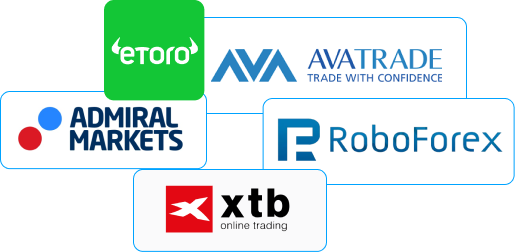Indexes are indicators that represent the average price of a selected group of stocks or assets within a particular market. They provide a snapshot of the overall performance of a market or sector, allowing investors to gauge trends and make informed decisions. For example, the Dow Jones Industrial Average tracks 30 major U.S. companies, while the S&P 500 reflects the performance of 500 of the largest U.S. companies. Indexes themselves are not tradable assets; instead, investors can trade derivatives such as futures or options, or invest in mutual funds and ETFs that track these indexes. Trading indexes involves speculating on the future movement of the index based on market trends, economic indicators, and company performances. These trades can offer opportunities to profit from both rising and falling markets. In conclusion, indexes provide a valuable overview of market performance, and trading them through derivatives or index-tracking funds allows investors to capitalize on market trends and movements.
What are Indexes and How are They Traded?
There are various types of indexes that cater to different investment needs and strategies. Broad market indexes, such as the S&P 500 or the MSCI World Index, provide a comprehensive view of the overall market or global equity performance. Sector-specific indexes, like the Nasdaq-100 or the FTSE 100, focus on particular industries or sectors, such as technology or finance.
Geographic indexes track markets within specific regions or countries, such as the Nikkei 225 for Japan or the DAX for Germany. Additionally, there are custom and niche indexes created to represent unique investment themes or strategies. Each type of index has its own methodology for selecting and weighting its components, providing different insights and opportunities for investors.
In conclusion, understanding the various types of indexes helps investors select the right index for their investment goals, whether they are seeking broad market exposure, sector-specific insights, or geographic focus.
Explore our selection of Indexes trading courses, to start your trading journey today.
Or visit our Brokers comparison page to start trading now!
Index prices are calculated based on the performance of the constituent stocks or assets that make up the index. Most indexes use a weighted average approach, where the price changes of individual components impact the index based on their relative importance or market capitalization. For example, in a market-capitalization-weighted index, larger companies have a more significant influence on the index’s movement than smaller companies.
Index prices can also be affected by changes in the underlying market conditions, such as economic data releases, corporate earnings reports, and geopolitical events. Adjustments are made periodically to reflect changes in the market, such as adding or removing companies based on criteria set by the index provider.
In summary, index prices reflect the collective performance of their components, influenced by various market conditions and periodic adjustments, which help maintain their relevance and accuracy.
Explore our selection of Indexes trading courses, to start your trading journey today.
Or visit our Brokers comparison page to start trading now!
Investing in indexes offers several advantages. One of the primary benefits is diversification, as indexes include a wide range of companies or assets, reducing the risk associated with investing in individual stocks. Index investing also provides exposure to the overall market or specific sectors, allowing investors to benefit from broad market trends.
Additionally, investing in indexes often involves lower fees compared to actively managed funds, as they require less frequent trading and management. Index funds and ETFs that track indexes are generally known for their transparency and simplicity, making them accessible and easy to understand for investors.
In conclusion, index investing provides diversification, broad market exposure, and cost-effectiveness, making it an attractive option for many investors seeking a straightforward and efficient investment approach.
Explore our selection of Indexes trading courses, to start your trading journey today.
Or visit our Brokers comparison page to start trading now!
While investing in indexes offers many benefits, it also involves certain risks. One major risk is market risk, where the entire index can decline due to adverse market conditions or economic downturns. Since indexes represent a broad range of assets, they are not immune to market volatility.
Another risk is that indexes can become outdated if they do not accurately reflect current market conditions or sector performance. Additionally, investing in indexes does not guarantee positive returns, as the performance of the index is tied to the overall market or sector trends, which can be unpredictable.
In summary, investing in indexes carries market risk and potential limitations related to their representativeness and performance. Investors should consider these risks and ensure that index investments align with their overall investment strategy and risk tolerance.
Explore our selection of Indexes trading courses, to start your trading journey today.
Or visit our Brokers comparison page to start trading now!
Find Your Trusted Broker
Finding the right broker is essential for a successful trading experience. Our Brokers review section provides a comprehensive view, comparing top brokers based on fees, user experience, and customer support. Whether one is a beginner or an experienced trader, these recommendations help users choose a broker that meets their needs, ensuring they have the tools and resources to trade with confidence.


 en
en es
es